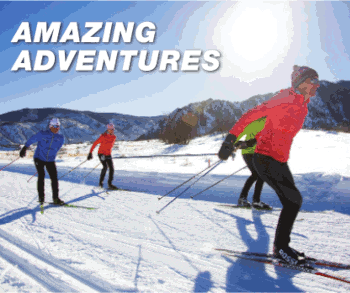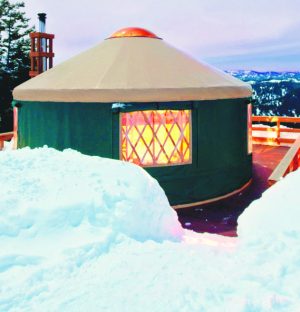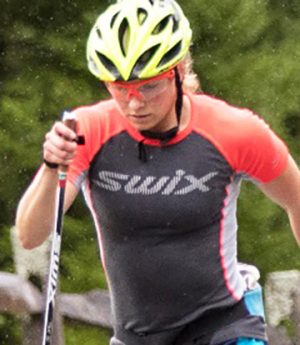December 27, 2007 – Canadian head coach Dave Wood was on a plane Christmas eve and as Christmas day arrived in North America, he was landing in Zurich, Switzerland. A couple of hours later, he joined up with Devon Kershaw and Dave Nighbor as they headed to Nove Mesto in the Czech Republic for the start of Tour de Ski (Part Deux).
The innovative program, with eight races over different techniques and different distances, began a year ago with Kershaw finishing second and Chandra Crawford third in a sprint in Munich, Germany, on New Year’s Eve. This season, the Tour de Ski gets underway Friday, Dec. 28 with a Prologue – a 3km classic technique race for the women, and a 4.5km test for men in Nove Mesto.
The first five races are in the Czech Republic. Friday and Saturday in Nove Mesto, sprints Sunday in Prague, then back to Nove Mesto to pick up races dropped by Oberstdorf, Germany. And then on to Italy for the final three races. (for Tour de Ski schedule).
And when it’s done Jan. 6 in Cavalese in Val di Fiemme, Italy, the three Canadians will head back to Canada to prep for the World Cup in Canmore, Alberta on Jan. 22-26.
Wood, who has been Canada’s cross-country head coach since 1998 succeeding Steinar Mundal, likes the innovative approach of the tour. Kershaw has shown he can challenge the leaders on occasion, Wood said in a cell phone interview, while Nighbor looks to absorb experience in the meat-grinder of international competition.
“Dave doesn’t have the World Cup experience that Devon does, so it should be a learning experience. We want him to go out, fight hard, do the best you can. He’ll learn,” said Wood.
“Devon hasn’t hit any plateaus in his preparation yet. Each year he’s been able to accomplish more in training, and now he’s stronger,” the coach said. “He’s working hard on endurance. He’s had some pretty solid results this season (16th in a 15 km classic and an impressive 12th in a 30 km skating mass start). He can ski with the top 10 for 10km, then he’ll give out a little at the end, although he held on nicely in that 30km.
“Before long, that won’t happen. He’s had success in sprinting and I think the most ideal events for him will be 40 minutes and less. And Devon’s very good in mass starts because he responds to that environment. I think he sees himself as a classic technique skier, but since last year he’s been pretty equal in both classic and skating.”
With only two sprints, Wood said the decision was made not to bring Crawford. Olympic and world Championships medal-winner Sara Renner returned from motherhood to ski in Davos, Switzerland, and decided she wants to train for the Canmore races. “She didn’t think she was ready yet, and that’s fine. Her return is critical for us,” said Wood, “She can be a winner. She can be on the podium and show our younger skiers it’s do-able.”
The Tour de Ski “is really geared for the distance person or the all-rounder. I mean, the time you gain in a sprint is insignificant to what you can lose in a 15km or 20km race. If you want to do well, you look at the sprint days as rest days. The leaders did the sprint qualifying because they had to, but they wouldn’t try to go on.
“Most of the good women do everything. And guys like Devon still get their sprint training but he’s fast enough to do well also in longer races. He’s gaining.”
The Tour, in Wood’s mind, is “a nice new twist for the sport. It’s not a sideshow. It’s a really hard and tough competition, a lot about what cross-country ski racing is all about. Sure, it’ll have a few growing pains as it gets established, but I see it only becoming more and more popular.”
The World Cups in Canmore, where an overhaul a couple of years ago created an East course and a West course, play nicely into the pursuit format with classic technique on one course and skating on the other. While some of the 1988 Olympic trails are gone, much of the climb remains. “It’s still pretty tough,” Wood said.
“It’s really important in North America, for the United States and us. The reality is we see the international racing level so infrequently, and that makes it difficult to build up a racing culture without that. The more opportunities young skiers get to see it and ski it, the better understanding they have of where we’re trying to go,” he continued.
He’s pleased organizers in Calgary are making a move to become a permanent fixture on the World Cup calendar. Races in January plus a pre-Olympic visit will help ensure Canmore becomes a greater international site, he feels.
Canada created a four-tier system for the national team athletes: Renner, Kershaw and Drew Goldsack are all-rounders; Crawford, Sean Crooks, Phil Widmer and Perianne Jones trained only as sprinters; Nighbor, Greg Grey and Robin McKeever are the distance racers; and the development group includes Dasha Gaiazova, Amanda Ammar, Stefan Kuhn, and Brittany Webster.
“There are always some changes in our preseason training. We always work to improve what what we feel is holding us back,” he said.
Top News Stories
Interview With Canadian Head Coach Dave Wood
by Paul RobbinsLeave a Reply
You must be logged in to post a comment.






![National camp action [P]...](https://skitrax.com/wp-content/uploads/2019/08/Duluth-4-2019-08-08-at-10.46.51-AM-300x246.png)
![Matt Liebsch on the CXC Elite Team [P] CXC...](https://skitrax.com/wp-content/uploads/2019/08/Matt-Liebsch-CXC.2-525x700.4-300x267.jpg)
![Dan LaBlanc [P]...](https://skitrax.com/wp-content/uploads/2019/08/Dan-LaBlanc-img_1855.3.jpg)

![Head Coach, Dave Wood[P]CCC](http://skitrax.com/skitrax22/images/skitrax/4773ce554abfbwood.jpg)